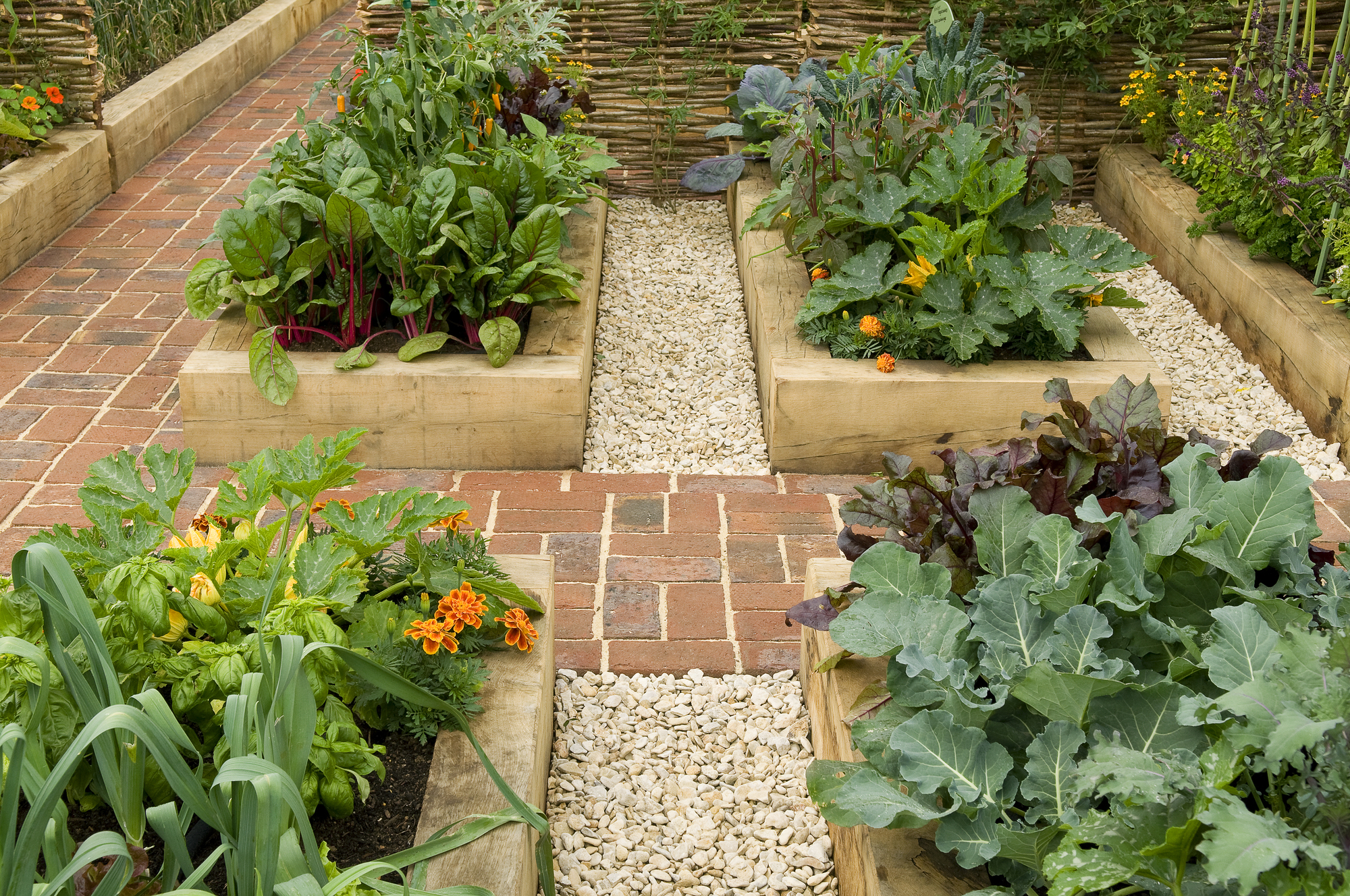If you have raised beds you need to know this expert secret which perfects them and assures you better crops
These versatile planters need nutrient-rich soil, so make sure you choose the right type


Raised beds are all the rage, and for good reason. These versatile planting structures are a great way to embrace gardening no matter the space or ground foundations you have available, and building one is the perfect DIY project for a sunny weekend. When it comes to growing your plants, however, you'll need to know what type of soil to fill them with.
As a type of contained planter, your raised beds will need added nutrients in their soil to ensure the plants within them are healthy. Filling them with any old soil just won't do, but wrapping your head around the various different composts and potting mixes available is not an easy task (and we're speaking from experience...).
However, whether used as vegetable gardens or flower beds, you'll need to know what soil to use in your raised planters if you want them to flourish. To offer some guidance, we've asked some gardening experts who know a thing or two about how to choose the right soil for your beds, and here's what they had to say.
What is the best soil mix for raised beds?

To talk facts, raised beds are essentially a type of planter that sits low to the ground. Just like container gardening, you don't plant your flowers or veggies within them directly into the ground, so you need a nutrient-rich soil to keep them healthy and happy. The problem is, that only narrows things down marginally...
'The ideal soil mix for raised beds, in my experience, is a combination of one-third compost, one-third peat moss (or coco coir), and one-third vermiculite (or perlite),' explains Tony O'Neill, owner of Simplify Gardening. 'This mix, often referred to as Mel's Mix after its inventor Mel Bartholomew, is popular among gardeners due to its excellent water retention, good drainage, and rich nutrient content.'
This type of potting soil is the holy trinity of growing mediums when it comes to container-grown plants. The compost provides a variety of nutrients while the peat moss or coco coir aids in moisture retention, and the vermiculite or perlite ensures the mixture remains light.
Depending on whether you're using your raised beds for vegetable gardening or flower beds, you may want to add loam soil (best for vegetables) or a perlite (good for annual flowers) into your existing mix.
The Livingetc newsletters are your inside source for what’s shaping interiors now - and what’s next. Discover trend forecasts, smart style ideas, and curated shopping inspiration that brings design to life. Subscribe today and stay ahead of the curve.
Should you put topsoil in raised beds?

When planting straight into the ground, topsoil - the uppermost layer of the ground -contains most of the nutrients and fertility needed for your plants. For that reason, you might be inclined to think it's a good choice for your raised beds but, as Tony explains, that might not necessarily be the case.
'Topsoil may contain weed seeds and can be heavy and compact easily, limiting root growth,' he says. 'While it can be a cost-effective choice, especially for filling large beds, it should ideally be mixed with other materials like compost or well-rotted manure to improve its structure and nutrient content.'
Zahid Adnan, plant expert and blogger at The Plant Bible, agrees that you should avoid relying solely on topsoil, instead suggesting using it alongside other potting mediums. 'Incorporating topsoil into the mix provides a solid foundation for plant growth and helps retain moisture while still allowing excess water to drain away,' he says.
Can you use normal soil in raised beds?

If you're on a budget or looking for a quick fix, you might be considering regular garden soil in your raised beds. While it's certainly possible, it's probably not the best idea if you want a pretty display of blooms or a successful crop of veg.
'This is because garden soil tends to be denser than the ideal raised bed soil mix, which can impede root development,' says Tony. 'It might also lack the nutrient richness of a well-balanced mix and may carry pests, diseases, or weed seeds.'
You might also find that water-logged soil becomes an issue in your beds if you use garden soil. 'Normal soil can easily become compacted in the confined space of a raised bed, leading to poor drainage and restricted root growth,' Zahid explains. 'As a result, it might not provide the proper drainage needed for raised beds, potentially causing waterlogging and root problems.'
As with topsoil, if you want to make use of regular garden soil to make your life that bit easier, it's best to supplement it with other organic matter to improve its fertility and structure. For the healthiest raised bed, it's best to stick to a diverse mix of compost and soil amendments - you'll have a hard time finding a gardener who doesn't think it's the best potting mix for containers!

Lilith Hudson is a freelance writer and regular contributor to Livingetc. She holds an MA in Magazine Journalism from City, University of London, and has written for various titles including Homes & Gardens, House Beautiful, Advnture, the Saturday Times Magazine, Evening Standard, DJ Mag, Metro, and The Simple Things Magazine.
Prior to going freelance, Lilith was the News and Trends Editor at Livingetc. It was a role that helped her develop a keen eye for spotting all the latest micro-trends, interior hacks, and viral decor must-haves you need in your home. With a constant ear to the ground on the design scene, she's ahead of the curve when it comes to the latest color that's sweeping interiors or the hot new style to decorate our homes.


